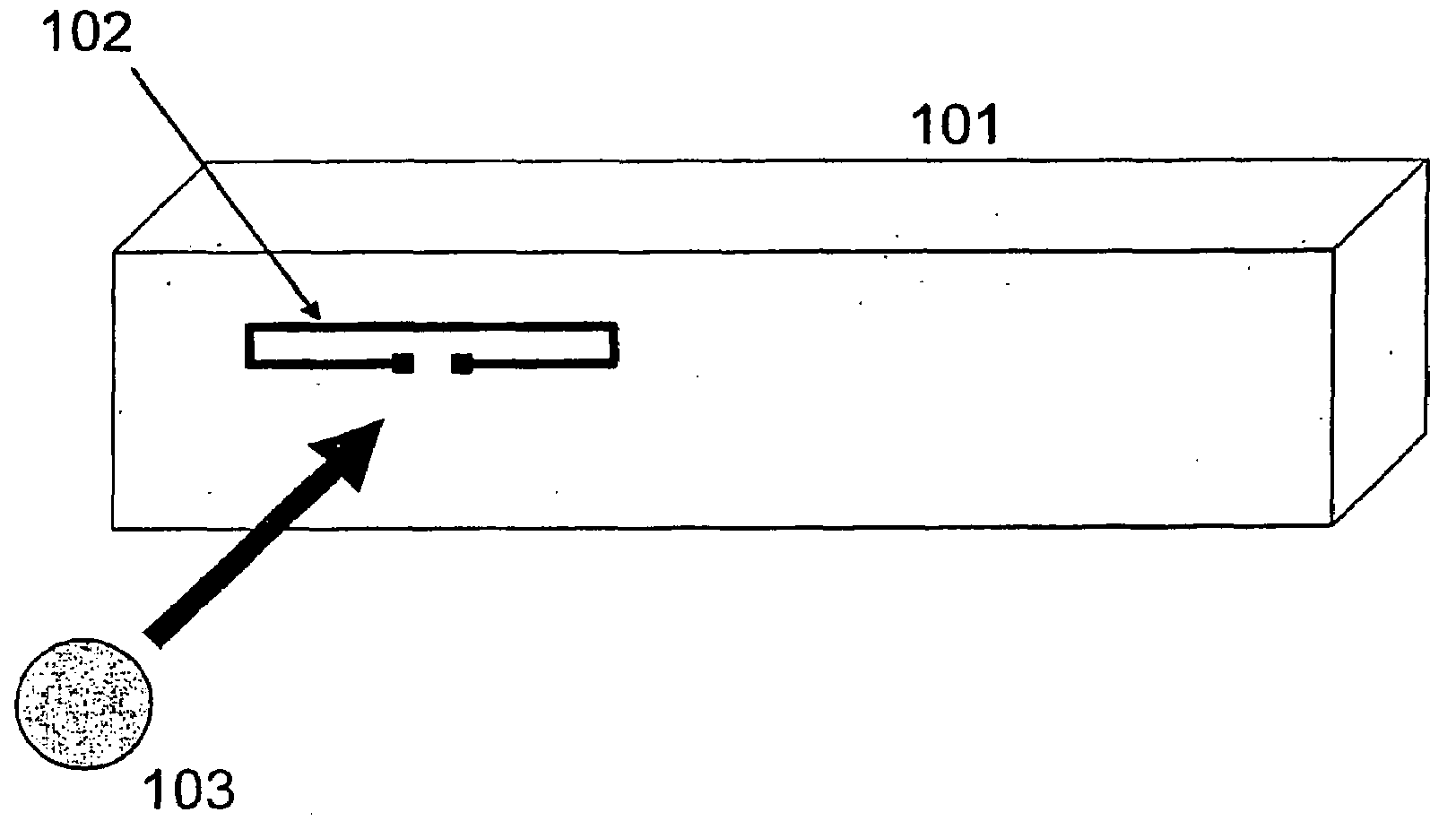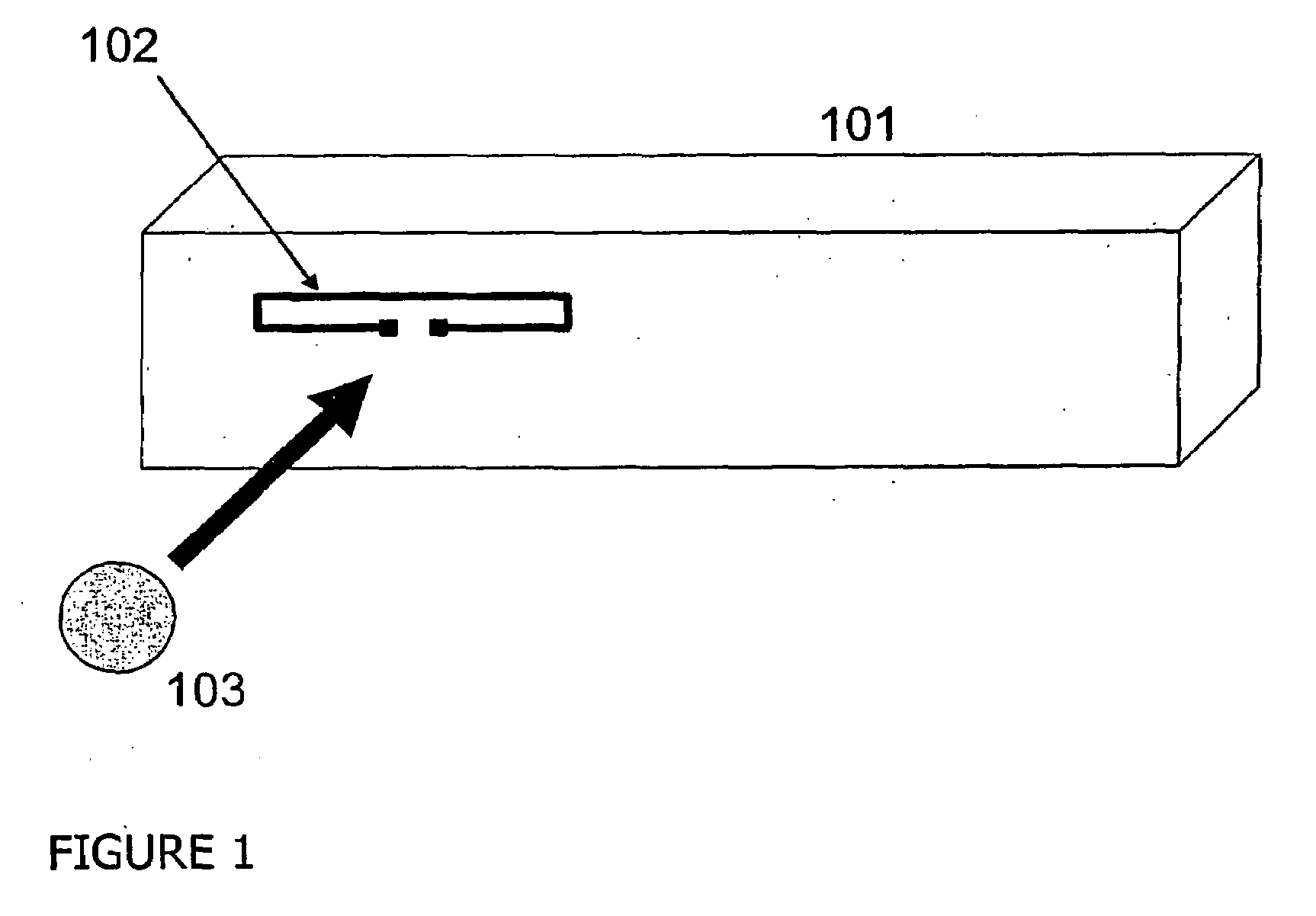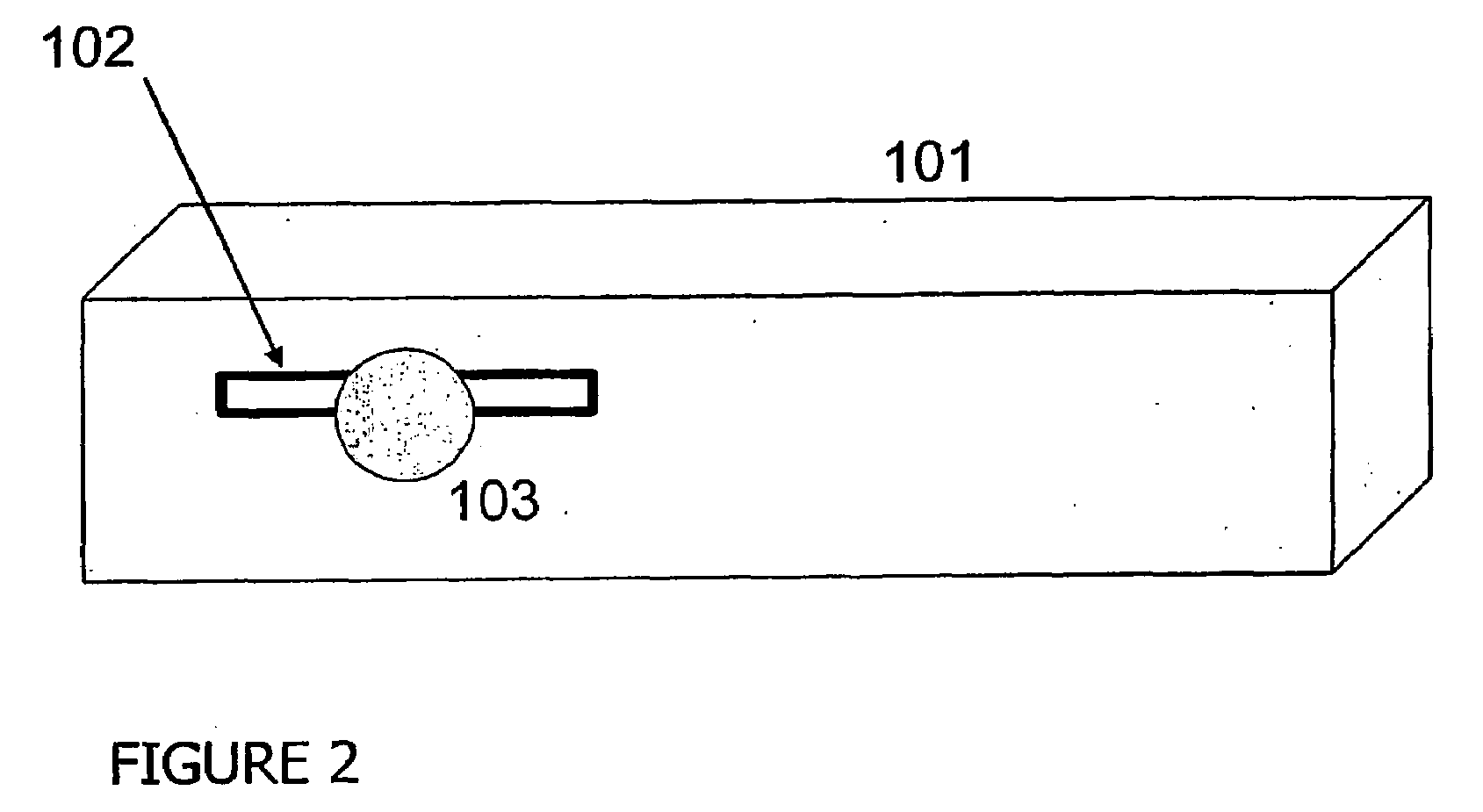Modular Radio Frequency Identification Tagging Method
- Summary
- Abstract
- Description
- Claims
- Application Information
AI Technical Summary
Benefits of technology
Problems solved by technology
Method used
Image
Examples
Embodiment Construction
[0008]In general an RFID tag provides the capability to store information electronically and to enable the stored information to be read from a distance by means of radio frequency (RF) techniques. In some cases an RFID tag may enable modification of said stored information.
[0009]An RFID tag typically comprises two distinct components:[0010]an RF antenna; and[0011]RFID electronics that are coupled to said RF antenna to provide an RFID capability.
[0012]In a conventional RFID tag both the RF antenna and the RFID electronics are integrated into the tag at the time of manufacture of the tag, so that the tags are produced as discrete, fully functional RFID devices that are applied to items to be tagged.
[0013]In comparison, according to embodiments of the present invention, the RF antenna portion and the RFID electronics portion of an RFID tag are produced separately and assembled on the item to be tagged. This reduces the overall cost of the RFID tagging process, in addition to providing...
PUM
 Login to View More
Login to View More Abstract
Description
Claims
Application Information
 Login to View More
Login to View More - R&D
- Intellectual Property
- Life Sciences
- Materials
- Tech Scout
- Unparalleled Data Quality
- Higher Quality Content
- 60% Fewer Hallucinations
Browse by: Latest US Patents, China's latest patents, Technical Efficacy Thesaurus, Application Domain, Technology Topic, Popular Technical Reports.
© 2025 PatSnap. All rights reserved.Legal|Privacy policy|Modern Slavery Act Transparency Statement|Sitemap|About US| Contact US: help@patsnap.com



